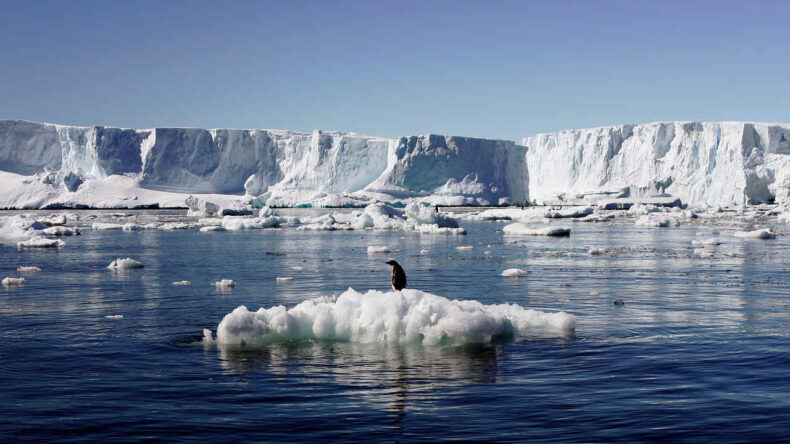We already know that global warming is causing the glaciers to melt. However, have you ever considered that the pathogens trapped in the ice might release as well?
Climate change has melted thousands of years of frozen ice. The pathogenic virus could reactivate as a result of this melting.
What if some of those things aren’t actually dead, but are only dormant and ready to come back to life?
What will happen if a dangerous virus that has been latent for thousands of years is suddenly released from the permafrost’s (permanently frozen) deep depths and infects us?

Scientists predict that something much more frequent, most likely melting glaciers, will be the source of the next pandemic. This is because the world is still healing from the consequences of the coronavirus pandemic. Read more.
As a result of climate change, glaciers all over the world are melting at a rapid and intense rate. A genetic analysis of soil revealed the risks of viral spillover and viruses jumping onto a new host. A virus can even infect a new host and spread to it over time, a process known as viral spillover.
It is said that if temperatures rise due to climate change, it is more probable that viruses and bacteria resting in glaciers and permafrost may reawaken and infect adjacent wildlife, especially if their ranges migrate closer to the poles, according to The Guardian.
Researchers examined the risks of spillover in a paper published by the journal of biological sciences, Proceedings of the Royal Society B, which states that climate change is increasingly affecting the environment around the world.
Climate Change: Melting Glaciers
The melting of glaciers continues to worry scientists the most because the release of viruses and germs that have been trapped in the glaciers could result from the removal of the permafrost weight.
Permafrost, the massive amount of frozen substrata that sits beneath the world’s most northern regions, also contains thousands of years of preserved biomass.
Permafrost is the product of soil that accumulated over millennia and could not melt in the summer as quickly as it could freeze in the winter, leading to ground that is up to a thousand meters thick in certain areas that has been continuously frozen for thousands of years. This is similar to how glaciers evolved.
This gives a similarly rich reservoir of pathogens, and in fact, this current paper is not the first time that experts have spoken about the likely viral and bacterial effects of global warming according to researchers.

In a 2014 publication, the first virus from our frozen past to be isolated and reactivated was disclosed. A 30,000-year-old ice core extracted from the Siberian permafrost was found to contain two species of the gigantic viral genus Pithovirus.
The same permafrost sample also yielded Mollivirus sibericum in 2015, which was isolated and described in the American journal Proceedings of the National Academy of Sciences.
Climate Change: Melting Glaciers Soil and Sediments
The researchers obtained soil and sediment samples from Lake Hazen, the largest high-Arctic freshwater lake in the world, and examined their RNA and DNA to look for indications that resembled those of recognized viruses. By examining how well the phylogenetic trees of the viral and eukaryotic hosts matched, they were able to predict the spillover risk and prove that it rises as outflow from melting permafrost increases.
Acknowledging that viruses are the most prevalent replicating organisms on Earth and that they are widely distributed. Viruses need to infect a host’s cell in order to replicate, hence while having extremely different genomes, they are neither independent entities nor replicators.
Climate Change: Melting Glaciers Causing Dynamic Viruses
Viruses could infect wildlife, resulting in dynamic diseases with the virus crossing onto humans, similar to how SARS-CoV-2 caused the COVID-19 pandemic.
“The high Arctic is a major issue because of its vulnerability to climate change and increased global warming. As demonstrated by arboviruses and the Hendra virus, a changing climate and fast environmental changes may both enhance spillover risk by altering the global distribution and dynamics of viruses as well as that of their reservoirs and vectors” The team made a statement in their article.
Read More: Drass glaciers are rapidly melting













